


Anyone who knows me would say my taste runs ever so slightly counter to the popular opinion (others would call me a contrarian douche, and rightly so!) but up top I wanted to shout out some big titles that I appreciate but didn’t quite make my favorites list. Oftentimes it feels like the days of true-blue horror icons are behind us, but Gerard Johnstone and Akela Cooper’s M3GAN was a veritable hoot that gave us an instantly iconic tiny terror in tights who more than lived up to the memes and showed everyone that hasn’t quite come around yet on HBO’s Girls (don’t worry, you’ll get there) just how #mother Allison Williams is. Also, that Skatt Brothers “Walk the Night” needle drop took up residence in my head last January and has not left. Talk to Me was one of the more intense in-theater experiences I had this year, and though it lost something the more I sat with it, what’s stuck with me is the confident swagger that YouTubers Danny and Michael Philippou exhibit behind the camera – I can’t wait to see what they and their generation of digital natives turned budding horror filmmakers come up with in the years to come. Finally, it seems like Demián Rugna’s deviously inventive When Evil Lurks is topping everyone’s best-of list, and I want to give it its due; the film is truly masterful in its world-building and contains some of the best individual sequences in any horror flick this year. But, for me, it feels like a lot of table setting for a meal that never arrives. With that out of the way, please enjoy my faves of 2023!

Femme
Based on their short of the same name, Sam H. Freeman and Ng Choon Ping’s Femme is an erotic thriller sans thrills where the violence of internalized homophobia injures worse than any icepick or length of garrote wire. Nathan Stewart-Jarrett (Nia DaCosta’s Candyman) stars as Jules, a drag performer assaulted by the same straight-presenting street tough named Preston (George MacKay, Marrowbone) that he later encounters at a gay sauna. Revenge on his mind, Jules pursues a sexual relationship with Preston, but soon finds himself unsure whether he’s going through the motions of the toxic power dynamic or actually getting off on it. Playing like Paul Verhoeven’s Elle for the recreational ketamine crowd, Choon Ping and Freeman pick away at the rape/revenge formula to raise questions about the discomfiting overlap between trauma and sexual desire, masculinity as performance, and the soul-killing hollowness of retribution. Femme is tense, provocative, devastating, and best of all? Intolerably hot.

Suitable Flesh
Joe Lynch is likely among the last filmmakers one would have expected to carry on the sex and slime-flecked legacy of our late great Lovecraft adaptor par excellence, but doubt Stuart Gordon’s wisdom at your peril (legend has it that the master named the Mayhem director a worthy successor long before his passing) because Suitable Flesh “gets” Gordon’s cinema better than just about any of its ilk. Armed with a long-unproduced Dennis Paoli screenplay, Lynch’s wisely swaps the The Thing On the Doorstep’s fusty male leads for Heather Graham and Barbara Crampton, morphing a moth-eaten Lovecraft B-side into a Lifetime movie for perverts. Graham is especially in-tune with the film’s surprisingly refined queer and camp sensibilities and The Babysitter’s Judah Lewis shows that he’s all grown up in a deviously sexy turn sure to launch wet nightmares and thirst tweets for the foreseeable future. Suitable Flesh manages to feel like the lost link, or more aptly, pleasure center between Gordon’s own ‘80s heyday (Re-Animator, From Beyond) and his warped 2000s DTV drama period (Stuck, King of the Ants) and it’s a near-supernatural accomplishment that old Stu himself is probably looking down upon with pride from whatever eldritch hell dimension he’s decided to call home.

Red Rooms (Les Chambres Rouges)
Québécois writer/director Pascal Plante cuts to the marrow without spilling a drop of blood in his Fantasia Festival winning Red Rooms – a gripping character study that takes on our collective true crime obsession with transgressive curiosity and clinical sharpness. Juliette Gariépy stars as withdrawn model/Dark Web netizen, Kelly-Anne who strikes up a friendship with the conspiracy-minded Clémentine (Laurie Babin) over their shared fascination with Ludovic Chevalier (Maxwell McCabe-Lokos): a serial killer on trial for the livestream murders of three high school girls in an online “red room.” Plante’s film feels like the grim 2020s answer to the early internet age anxieties of Olivier Assayas Demonlover, trading the millennial techno-thrills of multinational corporate espionage for the far more sober but no less troubling near reality of average internet users surfing mere clicks away from a bounty of violence and death. The material is beautifully matched by Gariépy, who shines and repulses in a slithery performance as a heroine in whom the dividing line between avenging angel and obsessive sicko may not even exist.
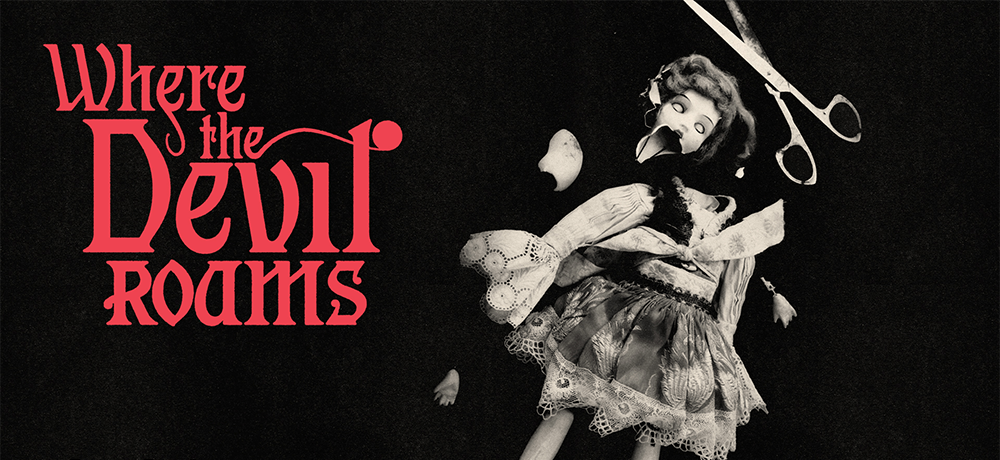
Where the Devil Roams
Following the breakthrough successes of The Deeper You Dig and Hellbender, filmmaking clan The Adams Family have taken their biggest artistic leap with Where the Devil Roams, an ambitious black valentine to golden age horror cinema and the sweet pain of growing older and finding your voice. Written, directed by, and starring Toby Poser, John Adams, and their daughter Zelda (the film also features their eldest, Lulu) as a group of murderous, Depression-era carnival workers who find themselves literally and figuratively falling apart when they come into possession of a fabled, infernal pin cushion, The Adams stretch their biggest canvas yet, crafting a homespun tale set in a frostbitten world of backwater sideshows that loses color throughout its runtime like blood draining from a neglected wound. The Adams Family approach to horror has always been more lyrical than grounded, and that tack reaches full flower here, with Where the Devil Roams emerging as their most boldly experimental and fluidly musical work: a chilly family parable that feels like a folk-metal fusion of Nightmare Alley and Frankenstein.
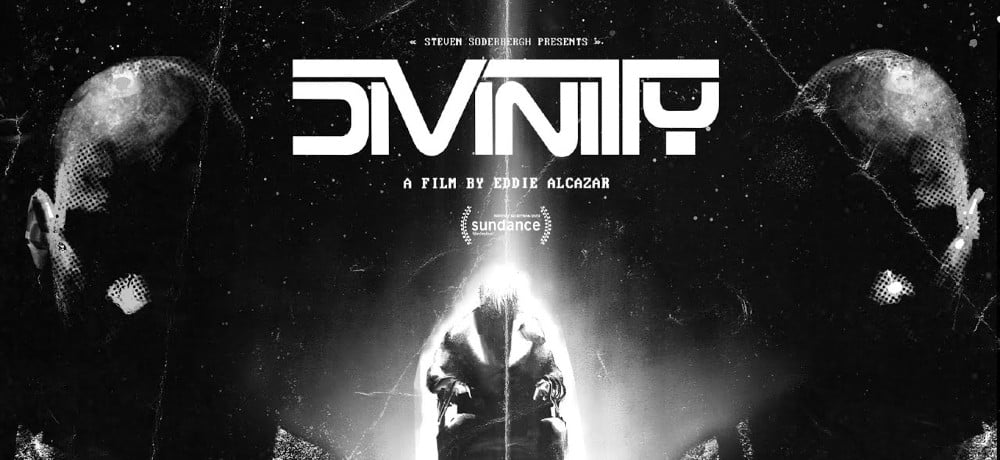
Divinity
There’s a whiff of the ridiculous to Eddie Alcazar’s stylish sci-fi horror satire that’ll put some off, but even a hater can’t deny what a visual marvel Divinity is. With a cast of notable stars (Bella Thorne, Stephen Dorff, Scott Bakula) and executive producer Steven Soderbergh in his arsenal, Alcazar and cinematographer Danny Hiele were able to shoot on 16mm black and white reversal film, giving Divinity a uniquely strong visual base to contrast the director’s freewheeling style of creation that favored constantly evolving storyboards in lieu of a proper script. The hypnotic and striking visuals anchor an unparsable story about an immortality serum and its effects on human society, but this is the type of film where your leading man morphs into a juiced-up comic book abomination and a former Disney channel kid gives birth to a tree of penises - narrative sense is overrated and resistance is futile if you’re appropriately cross-faded. Critics have thrown the words “pretentious” and “self-serious” Divinity’s way, but it’s hard to see what they’re on about when you’ve got body-builders and weird threesomes and gross practical effects and a climactic stop-motion smackdown that more than makes up for the price of admission. You’ll pardon the pun, but style over substance is rarely this divine.

Insidious: The Red Door
Small, personal, and emotionally layered in a way that’s almost totally inappropriate for the fourth sequel in a long-running popular horror franchise, Insidious: The Red Door is a disarmingly low-key character drama that reunites series stars Patrick Wilson and Ty Simpkins as a father and son at odds. A decade after Insidious: Chapter 2, Josh Lambert (Wilson) and his college-bound eldest Dalton (Simpkins) retain no memory of their horrific experiences in The Further, but the past they’ve both forgotten continues to hang over them, leading to resentment and reasserting itself in terrifying ways. Wilson does double duty in his role as first-time director, crafting some worthy scares (as if MRI machines weren’t nerve-wracking enough) and the screenplay by Scott Teems smartly builds on the foundation laid by the earlier films in a way that shows he can do better than whatever’s being asked of him by David Gordon Green. But it’s all down to Wilson and Simpkins who bring a wealth of onscreen history together to a father/son story that culminates in a deceptively simple resolution that tugs mightily at the heartstrings. Yes, it’s a trauma movie, but it’s one of the good ones.
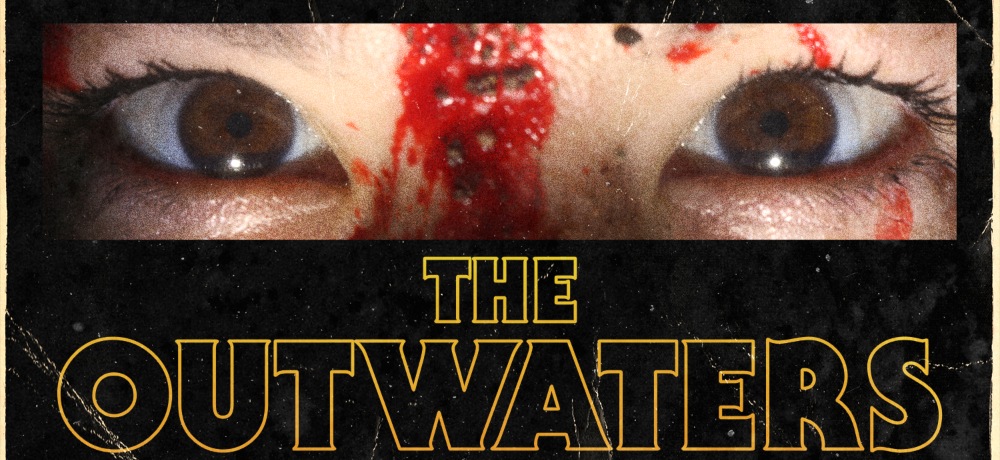
The Outwaters
Liminal horror is having a moment, and while Skinamarink may have been the viral, nothing-but-vibes flavor of the year, the rest of us were jabbering about The Outwaters to anyone who would listen. Robbie Banfitch’s found-footage opus has been unfairly lumped together with Kyle Edward Ball’s no-fi sleeper, and in some respects it’s easy to see why: both films offer a similarly somnambulistic and seemingly endless experience in slow-motion, low-frequency dread tapped from half-remembered dreams, chilling viewers to the core while testing their patience. But where Ball speaks in the language of childhood night terrors, Banfitch goes full-bore cosmic horror: delivering a far more ambitious film not just in scale but also sustained intensity. The story of a crew headed out to a remote desert location to film a music video is merely a pretense for a swan-dive through a crack in the fabric of reality with a shaky camera and pathetic circle of light our only shields against the encroaching dark. Much like its housebound cousin, The Outwaters will seem like a lot of sound and fury signifying less than nothing to a broad swath of horror fans, but tune into its wavelength, and, as its tagline commands, allow yourself to “die in the dark,” and it’ll haunt your sleepless nights forever.
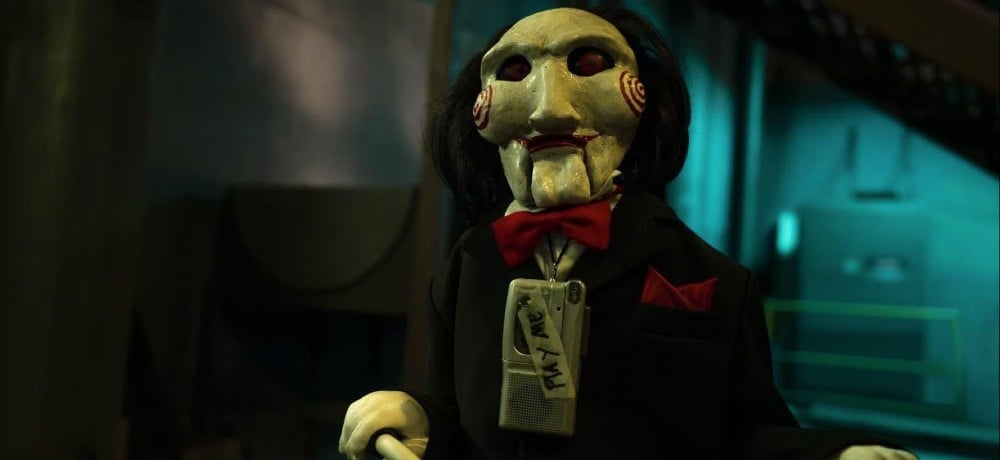
Saw X
Modern horror’s most curious and unexpectedly durable series (punishing soap-operatic continuity and a near total lack of charismatic leads wouldn’t seem like a recipe for success, and yet…), the Saw franchise has always been its own worst enemy. But after the hardy back-to-back belly flops of Jigsaw and Spiral, Saw X sagely takes things back to basics, but better. Less a throwback than a streamlining, the film is a slick delivery machine that doles out franchise staples like candy – hold the copaganda and mind-breaking plot contrivances. But the film isn’t without its surprises. The South American setting is a breath of fresh air for the infamously warehouse-bound series (though the less said about the film’s racial politics the better; this is still a Saw movie after all), and the casting of Norwegian actor Synnøve Macody Lund solves one of the series’ most nagging sins, namely the lack of a real dramatic foil for Tobin Bell. With every delicious, bitchy riposte, Lund steal’s John Kramer’s lightning and sucks some of the wind out of this po-faced series’ sails…and it’s all the better for it. It may have taken nine films to get there, but Saw X finally figures out that playing to its strengths and getting in on the joke is the best way out of its own trap.
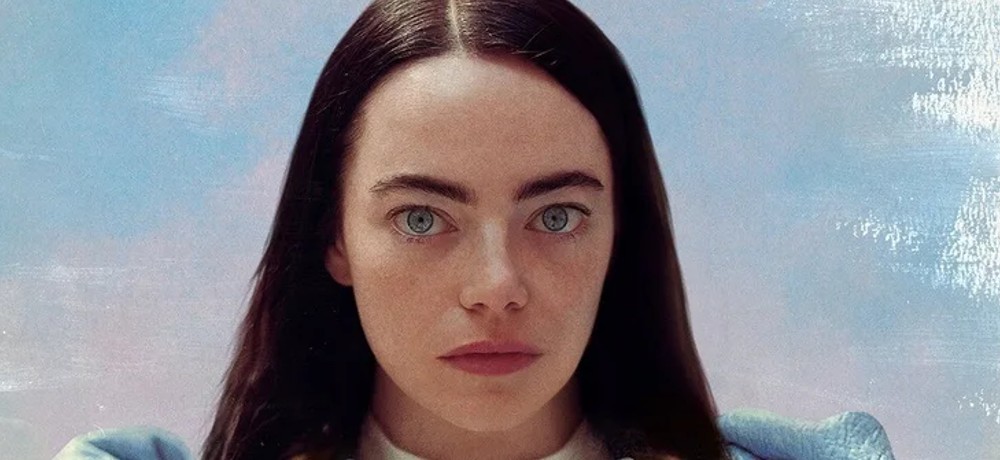
Poor Things
Woman-forward Frankenstein riffs are hot right now (Birth/Rebirth, The Angry Black Girl and Her Monster, Where the Devil Roams, the upcoming Lisa Frankenstein) but Yorgos Lanthimos’s phantasmagoric, Victorian era-set Poor Things is perhaps the most in-step with the feminist legacy of Mary Shelley. Based on a novel by late Scottish author Alasdair Gray, the film concerns the sexual and social liberation of Bella Baxter (Emma Stone) a woman re-animated by the scarred Dr. Godwin Baxter (Willem Dafoe) after her apparent suicide. With her unborn child’s brain swapped for her own dead one, Bella is given life anew as a blank slate – her rapidly developing independent mind and erotic appetites driving her from her surrogate father’s house in pursuit of knowledge, adventure, and personhood. A sex-stuffed comedy of mismanners, there are fair criticisms to levy at Lanthimos and screenwriter Tony McNamara’s anti-Barbie (the inability for male artists to imagine a woman’s self-actualization that isn’t found in terms expressly libidinal is a conversation worth having), but it’s hard to resist the film’s weird, gratuitous spirit or the veracity of its convictions. Stone is the best she’s ever been in a role that mixes the goofiness she had to put away to get her first Oscar with something thornier and more physical, and, like his leading lady, Lanthimos feels truly creatively untethered for the first time since Dogtooth: gifting viewers a deliriously droll cinematic whirligig that lands somewhere between Jean-Pierre Jeunet and the plastic ennui of And the Ship Sails On…but with eye-stabbing and mad science and ball gags.
---
Physical Media Releases:
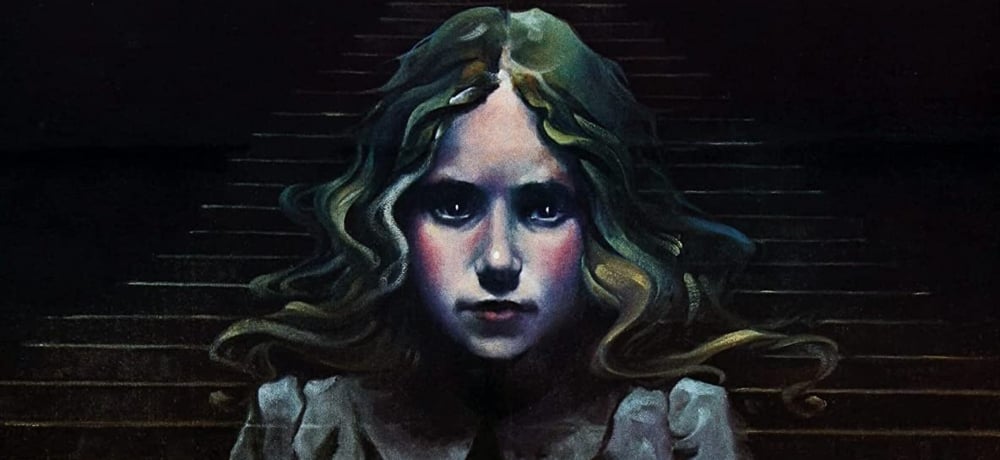
The Haunting of Julia (Shout! Factory)
Shout! Factory has been resting on its laurels as of late, but amidst this year’s catalog of re-releases and woefully in-need-of-curation Shaw Brothers box sets, the long out-of-circulation The Haunting of Julia (aka Full Circle) stands out like a stone cold gem. The third masterpiece of 1970s dead kid haunting movies after Don’t Look Now and Audrey Rose, The Haunting of Julia was the first big screen adaptation of a novel by Peter Straub, starring Mia Farrow as a woman who, after the choking death of her young daughter, moves into a house inhabited by a vengeful young specter. Shout! presents the somewhat lost film in its U.S. disc debut in an all-new restoration with a bevy of new special features - exhuming a flawed but scintillating slow-smoldering ghost story that deserves to be talked about in the same breath as the likes of Rosemary’s Baby and The Changeling.
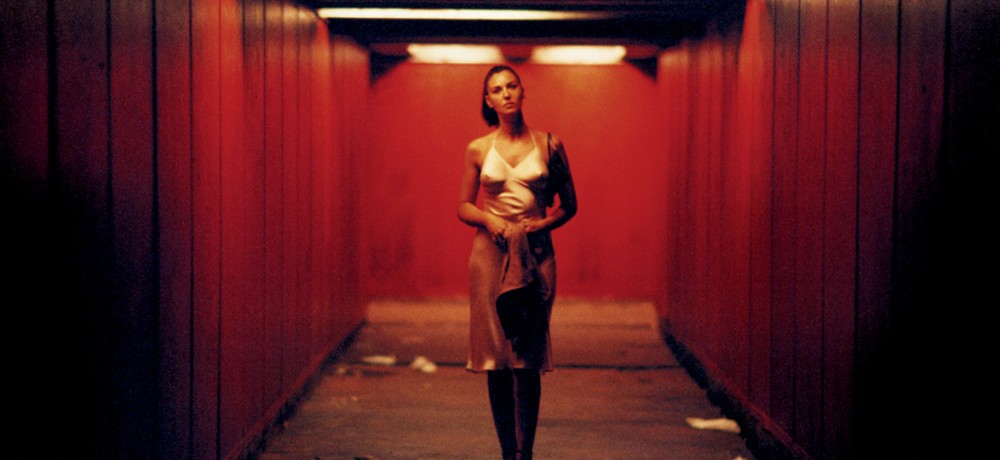
Irreversible: Straight Cut (Altered Innocence)
Altered Innocence specializes in queer and coming-of-age cinema, so it was a bit of a surprise when the label announced the release of Irreversible: Straight Cut in both cinemas and on disc. One of the central texts of New French Extremity, Gaspar Noé’s film has often been labeled as one of the most homophobic ever made, but despite its challenging queer elements, it’s easy to see why the label jumped at the chance to present the film in both its intended reverse chronological order and in a new, director-approved “straight cut,” allowing viewers to revisit the film in a more traditional narrative experience. Though it sounds like a gimmick, both cuts end up feeling like two halves of a whole, and watching them side by side leads to a deeper appreciation of a film that’s often been labeled as sadistic torture porn despite its technical mastery and devastating central performances.
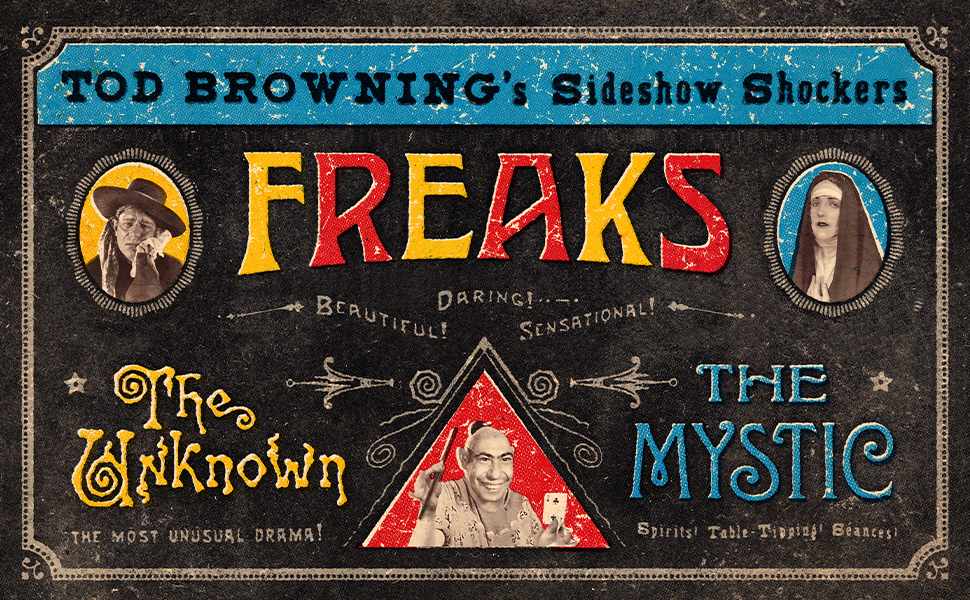
Tod Browning’s Sideshow Shockers (Criterion Collection)
It feels like Dracula (1931) director Tod Browning is always in the shadow of the more respectable James Whale, but leave it to the good folks at the Criterion Collection to set the record straight. The beautifully designed Tod Browning’s Sideshow Shockers presents three of the director’s central works (Freaks, The Unknown, and the long unavailable The Mystic) in new 2k restorations with brand new scores for the two silent features. The set comes with a wealth of special features and a booklet, but what really makes this set are the included commentaries and intros by historian David J. Skal, whose book The Monster Show: A Cultural History of Horror first introduced this writer to Browning, his contemporaries, and the revelatory idea that horror always has something to say about the society that made it.

Paramount Scares - Volume 1
Turn up your nose if you must, but Paramount Scares - Volume 1 was a treat this Halloween season. Collecting five of the studio’s horror “classics,” (Rosemary’s Baby, Pet Sematary, Smile, Crawl, and the secret title – Sweeney Todd: The Demon Barber of Fleet Street) on 4k disc with set-specific slipcovers and all sorts of added bits and bobs (a pin, stickers, a box set exclusive special edition of Fangoria) in a fetching, blood red box, the collection obviously takes after Warner Bros. recent attempts to repackage their back catalog in lavish collector’s editions to siphon off some of that sweet, sweet boutique blu-ray label business. Crass money grab though it may be, this is a great way to nab an assortment of five solid-to-exceptional horror flicks if you’re less likely to pick up these titles individually, and Paramount has gone the extra mile to make this feel like an event. Here’s to hoping we get a Volume 2!